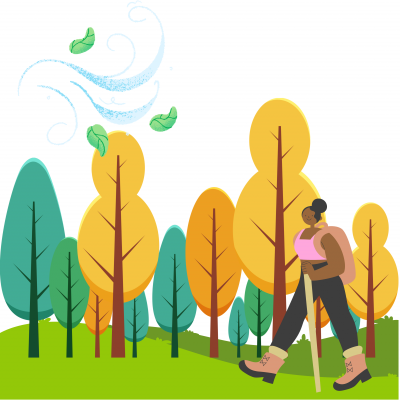
Connecticut’s forests provide vital social, environmental, and economic benefits. The UConn Extension Forestry Program works to sustain these resources through education, outreach, and partnerships. We support professionals, volunteers, landowners, and community members in understanding and caring for Connecticut’s diverse forested landscapes—from private woodlands and state forests to city parks and street trees.
Although Connecticut is one of the nation’s most densely populated states, over 60% of its land is forested, with some of the highest urban tree cover in the country. As urban areas expand, our program addresses the unique challenges of managing these essential forest resources through shared stewardship with state agencies and community partners.
What We Do

We help people care for Connecticut’s forests through:
- Teaching foresters, land stewards, youth, and communities sustainable forest care.
- Strengthening forests against extreme environmental events.
- Offering guidance in forest management, invasive control, and habitat restoration.
- Engaging and connecting people through workshops, activities, and partnerships that inspire forest stewardship.
Our Initiatives

Our initiatives include:
- Educating Woodland Owners: Programs like the Coverts Project and the Master Woodland Manager program to support sustainable private land management.
- Building Forest Resilience: Stormwise Initiative and the Extension Disaster Education Network help communities prepare for extreme events.
- Engaging Youth: Partnerships with ConnecticutView, the UConn Natural Resources Conservation Academy and UConn 4-H inspire youth and families through technology and hands-on forestry learning.
- Promoting Shared Stewardship: Our Urban and Community Forestry team, a joint effort between the UConn College of Agriculture, Health and Natural Resources and the UConn Hartford Research on Resilient Cities, Racism and Equity, advances community participation in forest management and policy.
- Training Professionals: We strengthen the skills of foresters and municipal leaders through training and collaborations with partners across the Northeast, like the CT Urban Forestry Council, the Oak Resiliency Project, and the Northeast Forests and Climate Adaptation Network.
Latest Blog Posts by Our Foresters
- Steal From Your Friends! January 6, 2025
- Maple Sugaring at UConn January 6, 2021
- Position on Forests, Carbon and Climate Change: Yankee SAF December 1, 2020
- The Slow Storm January 1, 2019